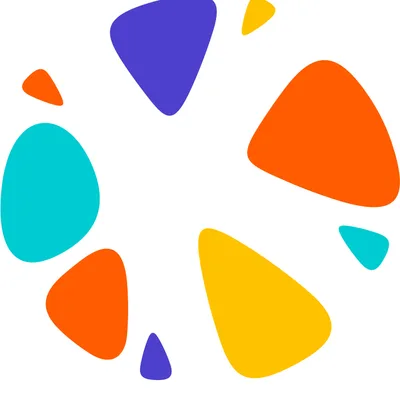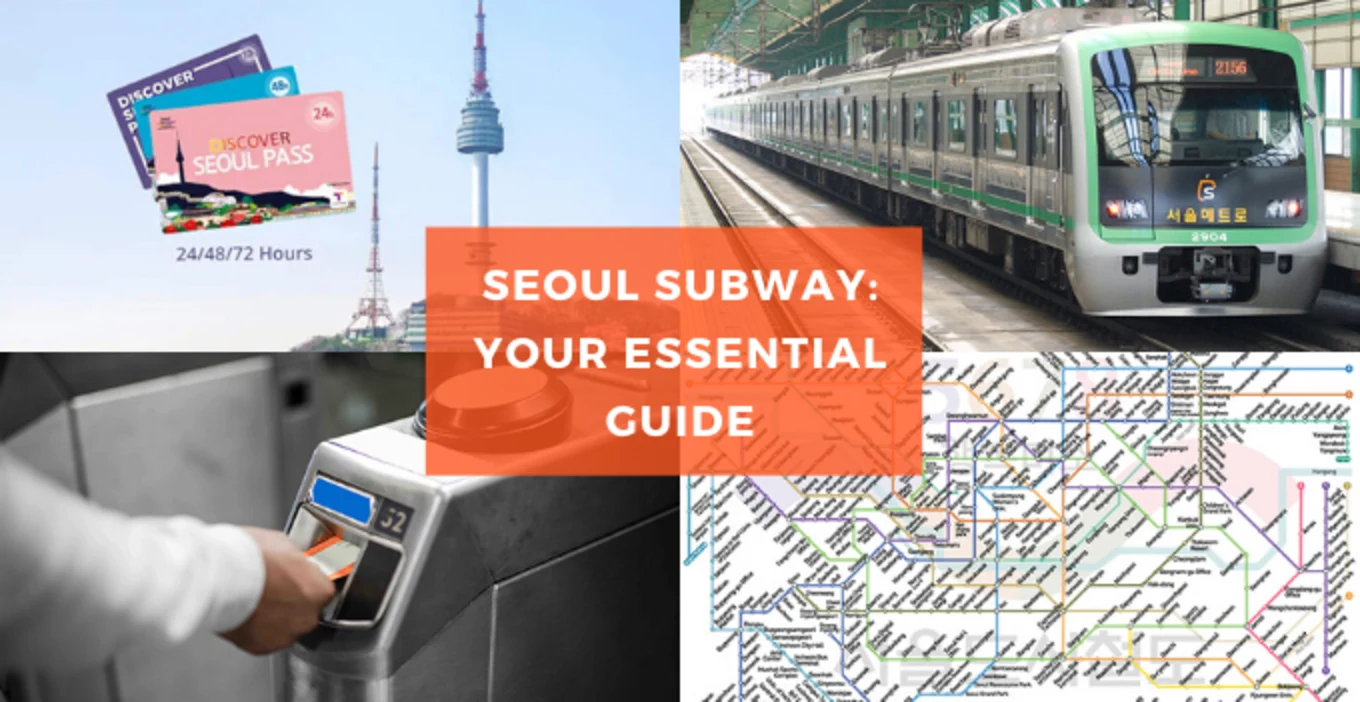Master the Seoul subway system
Getting your head around the Seoul subway will open up the best of the city. As one of the best transit systems on the planet, this kickass way to travel is convenient and comfy. Don’t let the comprehensive map send you to the taxi line, just familiarise yourself and get ready for adventure.
Finding the subway
More than 20 subway lines mean you’re never far from a station. These days, you’re never really lost; Google Maps will help you find both your Seoul accommodation and the nearest station. Look for the yellow train logo; most subway entrances look like covered staircases descending from the sidewalk. You can always ask at your hotel reception – locals know the system like the back of their hand.
Buying subway tickets
Tap it. Photo Credit: Korea Tourism Organisation
It’s simple: cash or T-Money? If you’re using cash, each ride means buying a single-journey ticket. So, if you’re going to use the subway more than 5 times, try the T-Money Card, which you can top-up with cash.
There’s a minimum of AUD 4.00 to activate the pass, and tourists can put up to AUD 25.00 on it. The bonus is, the T-Money Card is cheaper – check out the table below.
The above are base fares, covering the first 10 kilometres of your journey. An amount of AUD 0.10 will be added for every five kilometres past the first 10 to 50 kilometres of your journey. Past 50 kilometres, an additional AUD 0.10 will be added per 8 kilometres.
Klook your T-Money Card
For a hassle-free ride
Klook your T-Money Card which you can pick up in convenience stores, vending machines, department stores and payphones all around Seoul. But for a real hassle-free ride, purchase your pass before your trip! Each Klook T-Money Card is preloaded with AUD 6.00, so you can step off the KTX and onto the subway. This is also an easy way to change your cash to Korean Won. Plus – you can use your T-Money Card on buses and in taxi’s too.
Reload your T-Money Card
Here’s how to top up your T-Money Card at any subway station in Seoul:
- Find your nearest ticketing kiosk
- Choose your language (English, Korean, Chinese or Japanese)
- Put your T-Money Card on the reload plate to view your balance
- On the screen, select the amount you want top-up
- Insert cash or coins totalling selected amount
- Wait for the reload to complete
- Remove T-Money Card once your new balance appears on-screen
How to read the metro map
Zoom in on the virtual version here
Your T-Money Card is all charged up, so it’s time to conquer the Seoul subway! Don’t be put off by the complex Seoul subway map, it’s easier than it looks, so let’s break it down:
- Follow the line from your station to your destination
- Note each line change or transfer by checking colour of the line
- Count stops in between the two stations on your line
- To identify direction, check the first train line you’ll be riding and the line’s final stop
- Follow in-subway signs towards the first line of your journey
- On-platform, check the horizontal map for your final stop and find your station
- Stand behind the numbered platform lines and wait for your train
For transfers:
- Although it’s a good practice to take note of your transfers before boarding, the TV monitors on trains will also announce available transfers in each station
- Once you’re in your transfer station, you’ll find directions to your next line immediately as you exit the train doors
- Don’t tap out of the station unless your connecting train is in another station
It’s a sign
The great thing about the Seoul subway is that there are signs everywhere. On top of the platform lines, by the train doors and monitors! Of course, for first-timers and even frequent riders, it is still possible to get lost! There are also helpful information representatives in case you need extra assistance. Here’s a useful interactive Seoul metro map.
Subway etiquette
Be a good egg
Here are some subway dos and don’ts that’ll get you through:
- Always stand behind the numbered platform lines
- Wait for passengers to exit before entering a train car
- Don’t sit on train seats designated for PWD, pregnant women and senior citizens
- Stand on the right side of the subway escalators if you’re not in a rush
- Don’t make noise or eat inside train cars
Seoul Subway operating hours
The Seoul metro runs from 5:30am to 1am the next day. Some train lines do close before this 1am cut off, so avoid being stranded and keep an ear out for the train announcements. Not all Subway Apps update these closures in real-time, so don’t depend on these! Rush hour is from 4:30-8:00pm, so go for some KBBQ during this time instead!
Subway facilities
Restaurants
Most, if not all, subway stations have convenience stores and restaurants inside the area. So if you get snacky or need a meal, you’re covered.
Lockers
Safe storage. Photo Credit: Korea Tourism Organisation
Shopped too much or got a date after work? Lighten up and leave your belongings in lockers found in most stations for 2-4 hours, and pay with your handy T-Money Card! Choose from 3 sizes with differing costs at each station.
Breastfeeding room
Parents and bubs are catered for in specific stations – locate them on this virtual map.
Elevators
If you’re airport-bound, don’t lug your heavy suitcase. A good number of Seoul’s subway stations now have elevators in addition to escalators.
Wheelchair lifts
Stations with wheelchair lifts
This virtual Korea Subway map details which stations have wheelchair lifts. If you’re biking or driving, find out which stations offer bike racks and parking facilities.
Travel essentials
T-Money Card
Klook your T-Money Card before you leave for Seoul! Preloaded with KRW5,000, it’s perfect for your first subway ride from Seoul KTX Airport station. You can pick this up with your voucher at four airport locations.
Discover Seoul Pass
The right way to go
Offered in 24hr, 48hr, 72hr options, this pass can also be used as a T-Money Card! Just top it up at any subway station and make your way to any of the listed 42 free or discounted attractions accessible on the card!
CTA Button:
4G Pocket WiFi
Klook yourself a 4G Pocket WiFi to explore the streets of Seoul! With this you can stay connected to all your subway apps and social media channels!
Transport comparison
With the Subway, Seoul’s your oyster
The Seoul Subway is amazing. And compared with other transport options, it’s the clear winner! This isn’t because the other modes of getting around are lacking, but rather, the Subway is just so great.
Seoul Buses are cheap and extensive, but they take a lot of navigation as the maps and announcements are generally in Korean. There’s also the coloured bus system to work out, and if you’re paying cash, it’s got to be exact fare.
Another option is to take a taxi which is quite cheap by global standards, and like the subway – it’s convenient! Most drivers don’t speak English, so write your destination down to show them. You’ll love the Seoul Subway so much, the next thing to explore is the Busan subway map.















![[Updated] Complete List Of Official Nationwide MCO SOP 2021](https://res.klook.com/image/upload/fl_lossy.progressive,q_85/c_fill,w_160,h_104/v1633858858/blog/iso56uzsphmdguixkvzh.webp)





![[Updated] Complete List Of Official Nationwide MCO SOP 2021](https://res.klook.com/image/upload/fl_lossy.progressive,q_85/c_fill,w_410,h_264/v1633858858/blog/iso56uzsphmdguixkvzh.webp)







